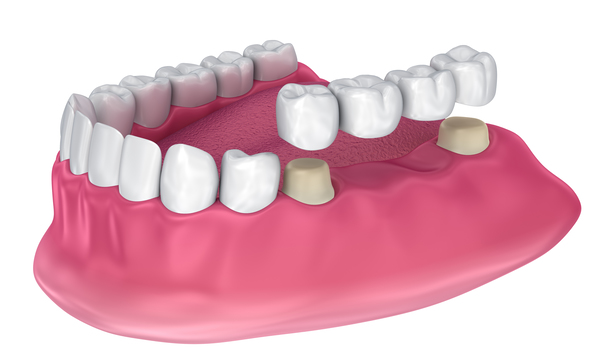How Do Dental Bridges Work?

Dental bridges are used to fill up gaps in a person's smile. It is a great solution for those who have lost multiple teeth but are not ready for either implants or dentures. Bridges have two main parts: a set of crowns placed on the two real teeth closest to both sides of the gap and a set of artificial teeth called pontics. The crowns used as anchors are called abutments.
What to expect when getting dental bridges
One of the reasons some people opt for a dental bridge instead of implants is the fact it does not require any surgical procedures. Getting them installed is a straightforward, simple process, and dentists can provide sedatives for patients who have dental phobias to make their visit a more pleasant experience.
The dentist starts by taking an impression of the patient's mouth and sending it over to a lab where the bridge and the crowns that will be used as abutments are made. The dentist will give the patient a shot of anesthetic and prepare the two teeth that will be crowned by removing any portion of enamel that will prevent the crowns from fitting properly.
The patient is typically fitted with a temporary crown and sent on their way. When the crowns and bridge are ready, the patient is called in for a second appointment. The temporary crowns will be removed during the second appointment and the customized crowns and bridge installed.
That is how simple getting a dental bridge is.
Recovery after getting a dental bridge installed
The procedure does not involve much pain since the patient is given a shot of anesthetic before their teeth are prepared for the crowns. The patient might experience soreness when the anesthetic wears off, but that should subside within a few days. Over-the-counter painkillers and ice packs are typically enough to deal with any discomfort experienced after getting dental bridges. Patients should contact their dentist if they experience serious pain after getting one installed.
Besides mild discomfort experienced by some, patients are free to eat a wide variety of foods. However, it is best to stick to soft foods for the first 24 hours while the dental cement sets.
Benefits
There are many benefits that come with bridges. These include:
- The wearer's smile is restored
- The function of the lost teeth is restored
- It prevents the remaining natural teeth from moving out of their proper positions
- It looks completely natural
- It prevents the person's facial features from changing due to missing teeth
Restore your smile and much more
Failing to replace missing teeth does more than just ruin the appearance of your smile. It can also lead to serious alignment issues and changes to your face. It limits you from eating the things you enjoy, and it can affect your ability to speak properly.
Why deal with all that when you can easily replace your missing teeth with a dental bridge? Talk to a dentist about teeth replacement options today.
Let's get started …
Request an appointment here: https://www.1dentalwellness.com or call Dental Wellness at (605) 252-5955 for an appointment in our Sioux Falls office.
Check out what others are saying about our dental services on Google: Dental Bridges.
Related Posts
A dental bridge is a valuable solution for individuals with missing teeth, providing functional and aesthetic benefits. If you are considering dental bridges to restore your smile, you will need to determine whether you are a suitable candidate for this treatment.Let us discuss the factors that determine whether a patient is a suitable candidate for…
The dental bridge procedure is a tooth replacement option. The bridge covers the gap between the teeth using the healthy teeth present on either side, consequently restoring the function and appearance of the teeth. This article outlines what happens during a dental bridge installation.The first step in the dental bridge procedure is to determine the…
Dental crowns are a reliable and durable solution for restoring the appearance and function of damaged teeth. While dental crowns are designed to last years, proper care and maintenance are essential for extending their lifespan. Following practical steps and working closely with your dentist can protect your investment and enjoy a confident smile for years.Maintaining…
Wondering whether you need a dental crown? The only way someone can know for sure whether or not they need one or more crowns placed in their mouth is to undergo a dental examination. If it is determined crowns are necessary to improve one’s oral health, the next choice is choosing the right type of…
